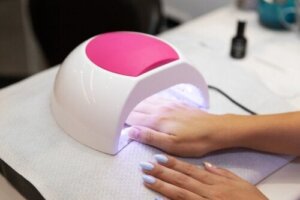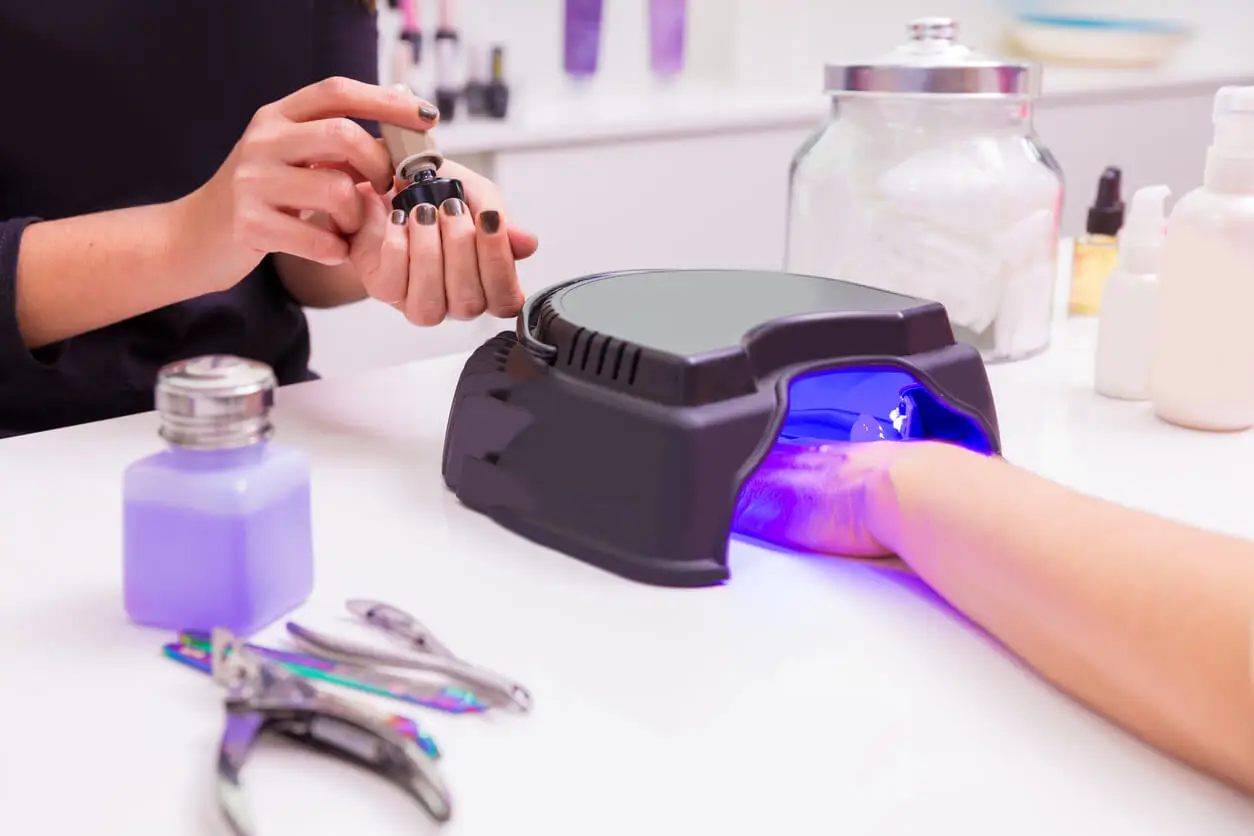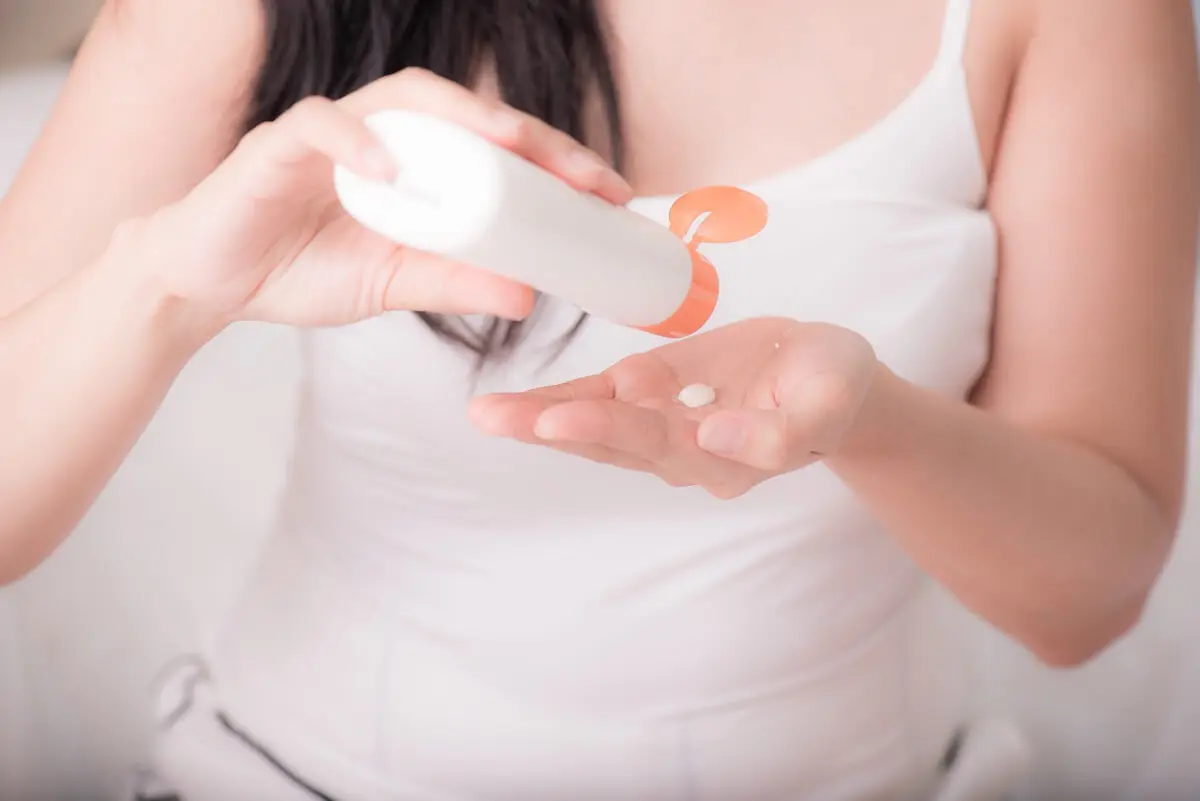Can UV Nail Polish Dryers Cause Skin Cancer?


Reviewed and approved by the doctor Leonardo Biolatto
Opinions are divided in regard to UV nail polish dryers. While organizations such as The Skin Cancer Foundation point out that the UV risk of these devices is moderate – even when using the most intense – recent studies suggest that exposure to these devices can lead to significant cell death and DNA damage.
In research reported in the journal Nature Communications, a group of dermatologists made findings that confirm the potential risks of these tools. Here are all the details.
UV nail polish dryers can raise the risk of skin cancer
A group of researchers from the University of California, San Diego, United States, determined that ultraviolet (UV) light emitted by lamps used in gel manicure salons can damage skin health.
The experts reported that the regular use of these tools leads to significant damage to the DNA of skin cells, as well as cell deterioration and mutations that subsequently lead to the appearance of skin cancer.
To reach these conclusions, a test was carried out with human and mouse cells, which were exposed to ultraviolet light in 20-minute sessions. During this time, a cell death of between 20% and 30% was observed.
Also, after three consecutive 20-minute exposures, a cell death of 65% to 70% was observed. The remaining cells experienced DNA damage and mitochondrial deterioration, which is linked to an increased risk of skin cancer.
In a press release, the authors of the study explain that sunlight emits ultraviolet A rays of 315 to 400 nanometers that penetrate the skin deeply. A tanning bed uses 280 to 400 nanometers. Meanwhile, UV nail dryers have spectrums of 340 to 395 nanometers.
But while the harmful effects of tanning beds have been evidenced in several studies, few have studied how UV nail polish dryers affect human cells at the molecular level.

Like this article? We think you may also like to read: Learn About the Advantages of Using LED Bulbs
The limitations of the study
Although the research is one of the first to focus specifically on the impact of UV lamps used in manicures, there are certain limitations. The most notable – undoubtedly – is that it’s different to test on human cells than on live animals.
The researchers point out that a long-term epidemiological study, with a focus on human cells, is necessary before conclusively stating that these lamps increase the risk of skin cancer.
In any case, they believe that these findings -in addition to previous evidence-are sufficient to take more preventive measures when using this type of devices.
Controversial results
It’s important to mention that previous studies on these tools yielded controversial results. In a study shared by the British Journal of Dermatology, experts determined that the risk of developing squamous cell carcinoma (SCC) from the use of UV lamps is low.
In fact, it’s likely to reduce such risks to zero through the use of fingerless gloves when you expose your hands to them. Other measures such as applying sunscreen are also effective in protecting the skin from this exposure.
Meanwhile, research reported in The Journal of Clinical and Aesthetic Dermatology concluded that, after an extensive literature search, gel manicures have little or no carcinogenic risk.
How to reduce the risks of using UV nail polish dryers
The medium – and long-term effects of using UV nail polish dryers are still being studied. For now, as reported by the Food and Drug Administration (FDA), their regular use is linked to the development of premature wrinkling of the hands, age spots, and possibly skin cancer.
And while the risk is low when following the directions for use, you should take other measures to protect the skin from the adverse effects that UV emissions can cause.
Here are some recommendations:
- Wash your hands well. Remove any traces of cosmetics or fragrances that have had previous contact with the hands (except sunscreen). The reason? Some chemical compounds in these products are photosensitizing and make the skin more susceptible to UV damage.
- Wear sunscreen. About 20 minutes before exposing your hands to UV dryers, it’s a good idea to apply a broad-spectrum sunscreen (30 SPF or higher). Ideally, it should contain zinc oxide or titanium dioxide. If this element is common in pedicures, it should also go on the feet.
- Wear protective gloves. Right now, many salons use protective gloves that expose only the nails. Their function is to absorb UV rays to reduce their impact on the skin.
- Determine if you’re taking photosensitizing products. Some medications and supplements have photosensitizing side effects. Antibiotics, oral contraceptives, estrogens, artichoke products, St. John’s wort, and figs are some examples.
- Respect the times of use suggested on the device. In general, these lamps come with instructions for use. The shorter the exposure, the lower the risk. For no reason should you use them for more than 10 minutes per hand.
- Look for alternatives. Nail dryers are necessary to harden gel polish. If the skin is sensitive or has other cancer risk factors, it is best to avoid using them. Regular manicures that dry in the open air or with a non-UV fan are still the best option.

We think you may also like to read this article: Nail Dryers: Types, Advantages, and Disadvantages
What to remember about nail dryers and skin cancer
Concern about the regular use of UV nail polish dryers has increased. In the meantime, larger studies on their effects are lacking. However, recent findings suggest that prolonged use may lead to cell deterioration. Also, they may lead to DNA damage and thus an increased risk of skin cancer.
These findings are still under debate, but experts suggest that there is sufficient reason to strengthen preventive measures. In this regard, the use of absorbent gloves for UV exposure is key. In addition, so is the application of broad-spectrum sunscreen and the choice of short exposure times.
All cited sources were thoroughly reviewed by our team to ensure their quality, reliability, currency, and validity. The bibliography of this article was considered reliable and of academic or scientific accuracy.
- Hale,K, E. (23 de enero 2023). The Skin Cancer Foundation. Available in https://www.skincancer.org/es/blog/ask-the-expert-are-the-uv-lamps-in-the-dryers-at-the-nail-salon-safe-to-use/#:~:text=Producen%20predominantemente%20Rayos%20UVA%2C%20que,por%20Dispositivos%20de%20bronceado%20UV.
- Zhivagui, M., Hoda, A., Valenzuela, N. et al. DNA damage and somatic mutations in mammalian cells after irradiation with a nail polish dryer. Nat Commun 14, 276 (2023). https://doi.org/10.1038/s41467-023-35876-8
- In cells, UV-emitting nail polish dryers damage DNA and cause mutations.(17 january2023). EurekAlert! Science News Releases. Available in https://www.eurekalert.org/news-releases/976879
- Le Clair MZ, Cockburn MG. Tanning bed use and melanoma: Establishing risk and improving prevention interventions. Prev Med Rep. 2016 Jan 14;3:139-44. doi: 10.1016/j.pmedr.2015.11.016. PMID: 27419006; PMCID: PMC4929140.
- Ratycz MC, Lender JA, Gottwald LD. Multiple Dorsal Hand Actinic Keratoses and Squamous Cell Carcinomas: A Unique Presentation following Extensive UV Nail Lamp Use. Case Rep Dermatol. 2019 Oct 2;11(3):286-291. doi: 10.1159/000503273. PMID: 31762742; PMCID: PMC6873006.
- Schwartz CT, Ezaldein HH, Merati M. Ultraviolet Light Gel Manicures: Is There a Risk of Skin Cancer on the Hands and Nails of Young Adults? J Clin Aesthet Dermatol. 2020 Jul;13(7):45-46. Epub 2020 Jul 1. PMID: 32983337; PMCID: PMC7492020.
- Diffey BL. The risk of squamous cell carcinoma in women from exposure to UVA lamps used in cosmetic nail treatment. Br J Dermatol. 2012 Nov;167(5):1175-8. doi: 10.1111/j.1365-2133.2012.11107.x. Epub 2012 Oct 5. PMID: 22708984.
This text is provided for informational purposes only and does not replace consultation with a professional. If in doubt, consult your specialist.








